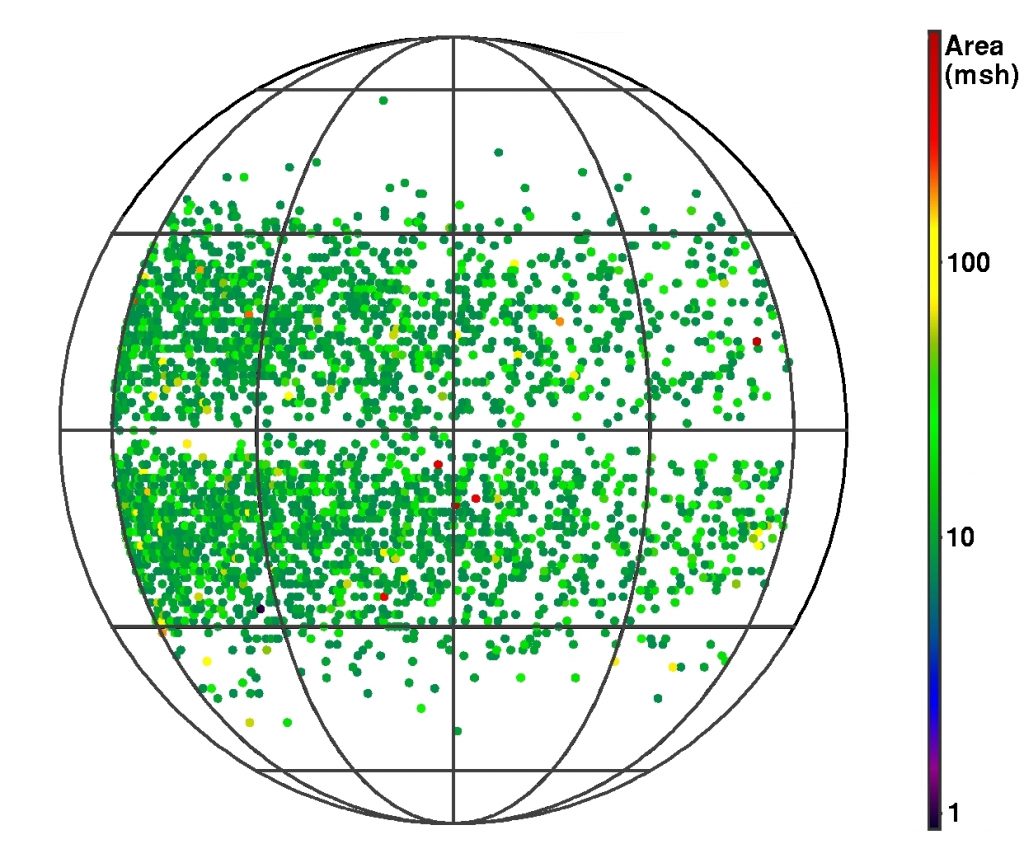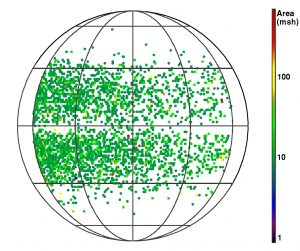
A team of scientists led by Silvia Dalla, of the Centre for Astrophysics, have discovered that 44 percent of new sunspots forming in the West of the Sun are invisible to our best telescopes.
Their findings, which have just been published in the Astronomy and Astrophysics Letters journal, were obtained using Virtual Observatory software tools developed by AstroGrid.
The team of scientists analysed nearly 7,000 sunspots that were observed over a 25 year period and found some areas of the Sun’s disk are missing new sunspots compared to others.
Dr Silvia Dalla, from the Centre of Astrophysics at the University of Central Lancashire, said: “This was very puzzling. It was even more surprising to find that similar observations had been reported 100 years ago by the British astronomer Annie Maunder, and had been forgotten since.”
“Our analysis shows that this effect is very large and as many as 44 percent of new sunspots in the West of the Sun are actually going undetected.”
Sunspots appear dark because of their low temperature compared to the surrounding regions. The Sun is constantly producing new spots and their identification and tracking is essential for predicting Space Weather: the magnetic fields of sunspots cause flares and huge eruptions of material called Coronal Mass Ejections that can impact the Earth’s atmosphere and disrupt satellite communications.
The reason why some sunspots remain invisible is that, just as they are growing, the Sun’s rotation is carrying them away from the centre of the disk, where visibility for Earth telescopes is best.
In their work, the three strong team consisting of Dr Dalla, Dr Lyndsay Fletcher from the University of Glasgow and Dr Nicholas Walton from University of Cambridge, demonstrated that the sunspot visibility threshold varies strongly with solar longitude, much more than previously thought.

